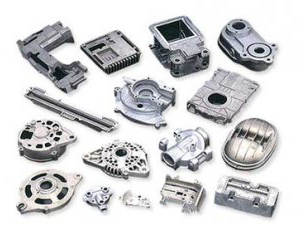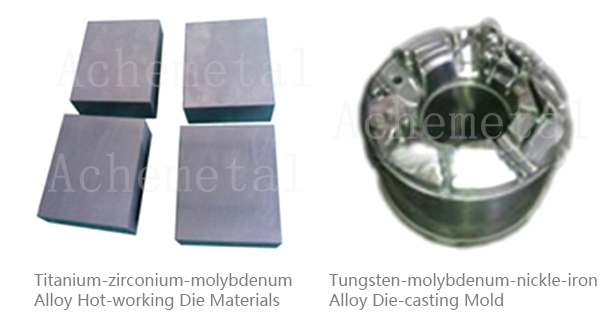Material for Die-casting Mold
- Categories:Formation and High-temperature Processing Tool Mat
- Author:
- Origin:
- Time of issue:2017-11-21 00:00
- Views:
(Summary description)In the process of die-casting iron/steel materials, the operating temperature of die-casting mold cavities can reach 1,000℃. After severe oxidation, corrosion and scouring of cavity surfaces, cavities will fail frequently because of severe plastic deformation and netty cracks, and can only die-cast dozens of or hundreds of parts. Therefore, refractory alloys of tungsten, molybdenum, niobium and other alloys with the melting point of more than 2,600℃ can be used for manufacturing cavities of die-casting molds. With the recrystallization temperature of more than 1,000℃, they can operate above this temperature for a long term. Titanium-zirconium-molybdenum alloy represents molybdenum-based alloy while tungsten-molybdenum-nickle-iron represents tungsten-based alloy.
Material for Die-casting Mold
(Summary description)In the process of die-casting iron/steel materials, the operating temperature of die-casting mold cavities can reach 1,000℃. After severe oxidation, corrosion and scouring of cavity surfaces, cavities will fail frequently because of severe plastic deformation and netty cracks, and can only die-cast dozens of or hundreds of parts. Therefore, refractory alloys of tungsten, molybdenum, niobium and other alloys with the melting point of more than 2,600℃ can be used for manufacturing cavities of die-casting molds. With the recrystallization temperature of more than 1,000℃, they can operate above this temperature for a long term. Titanium-zirconium-molybdenum alloy represents molybdenum-based alloy while tungsten-molybdenum-nickle-iron represents tungsten-based alloy.
- Categories:Formation and High-temperature Processing Tool Mat
- Author:
- Origin:
- Time of issue:2017-11-21 00:00
- Views:

In the process of die-casting iron/steel materials, the operating temperature of die-casting mold cavities can reach 1,000℃. After severe oxidation, corrosion and scouring of cavity surfaces, cavities will fail frequently because of severe plastic deformation and netty cracks, and can only die-cast dozens of or hundreds of parts. Therefore, refractory alloys of tungsten, molybdenum, niobium and other alloys with the melting point of more than 2,600℃ can be used for manufacturing cavities of die-casting molds. With the recrystallization temperature of more than 1,000℃, they can operate above this temperature for a long term. Titanium-zirconium-molybdenum alloy represents molybdenum-based alloy while tungsten-molybdenum-nickle-iron represents tungsten-based alloy. These kinds of materials feature extremely high melting point, better high-temperature strength, good heat resistance and corrosion resistance, excellent heat conductivity, thermal fatigue resistance, no bonding with molten metal, good plasticity and convenient molding. It is mainly applied to die-casting molds of copper alloy and iron/steel materials operating at a higher temperature, and can also be used as a thermal extrusion mold and other molds of titanium alloy and heat-resisting steel, with the service life far longer than that of other various kinds of hot work die steel. With outstanding heat conductivity of tungsten-molybdenum-nickle-iron, it also takes advantages in large-batch continuous production of aluminum die castings in the automobile industry.


 +8613526941255
+8613526941255

 Message
Message 